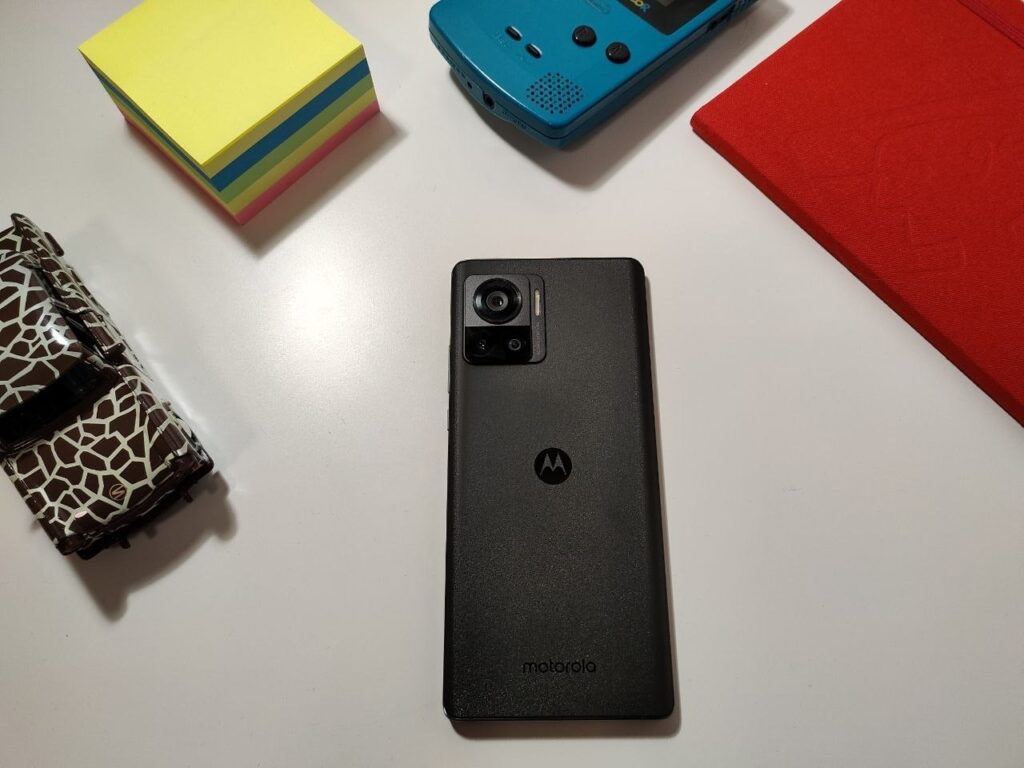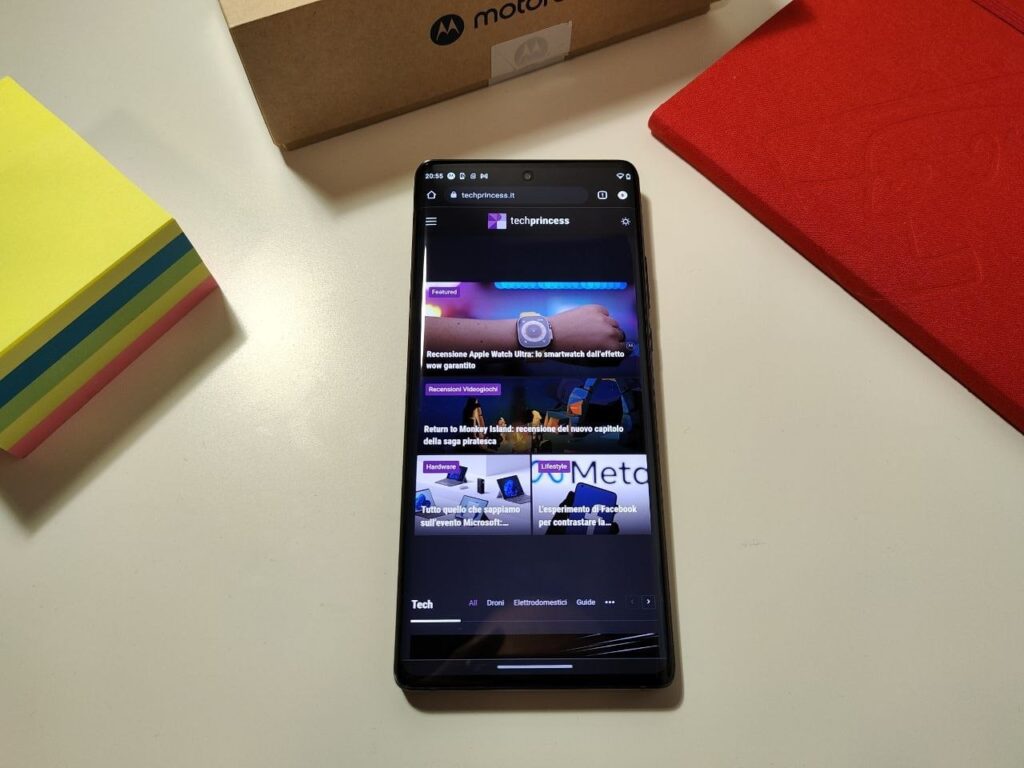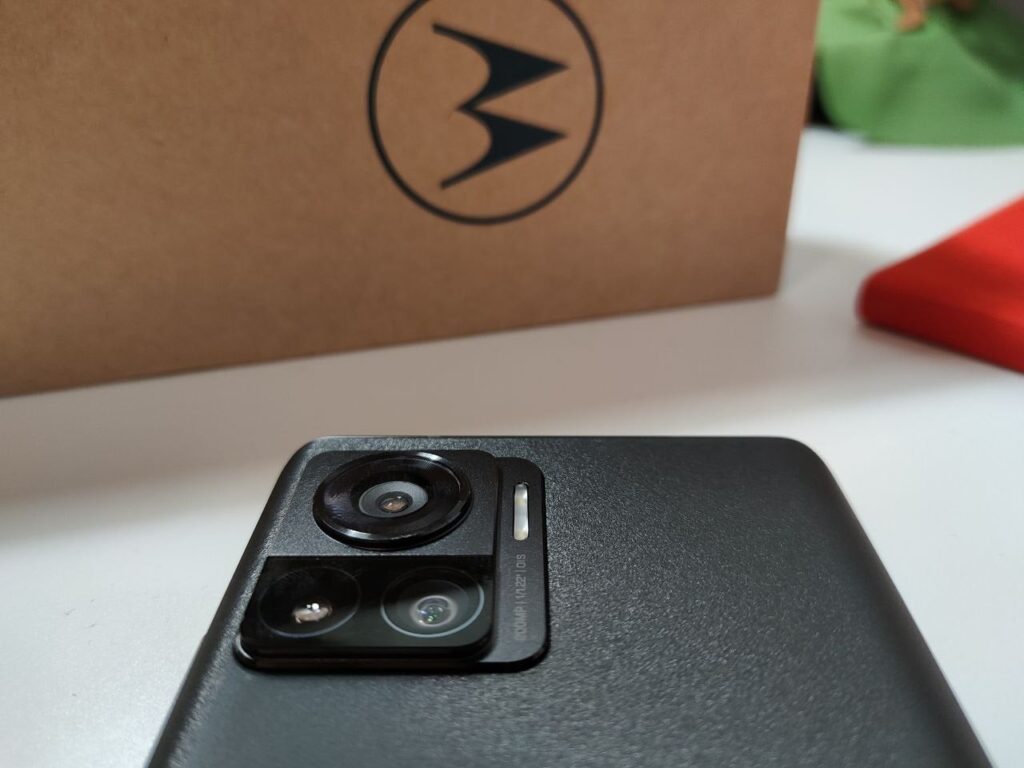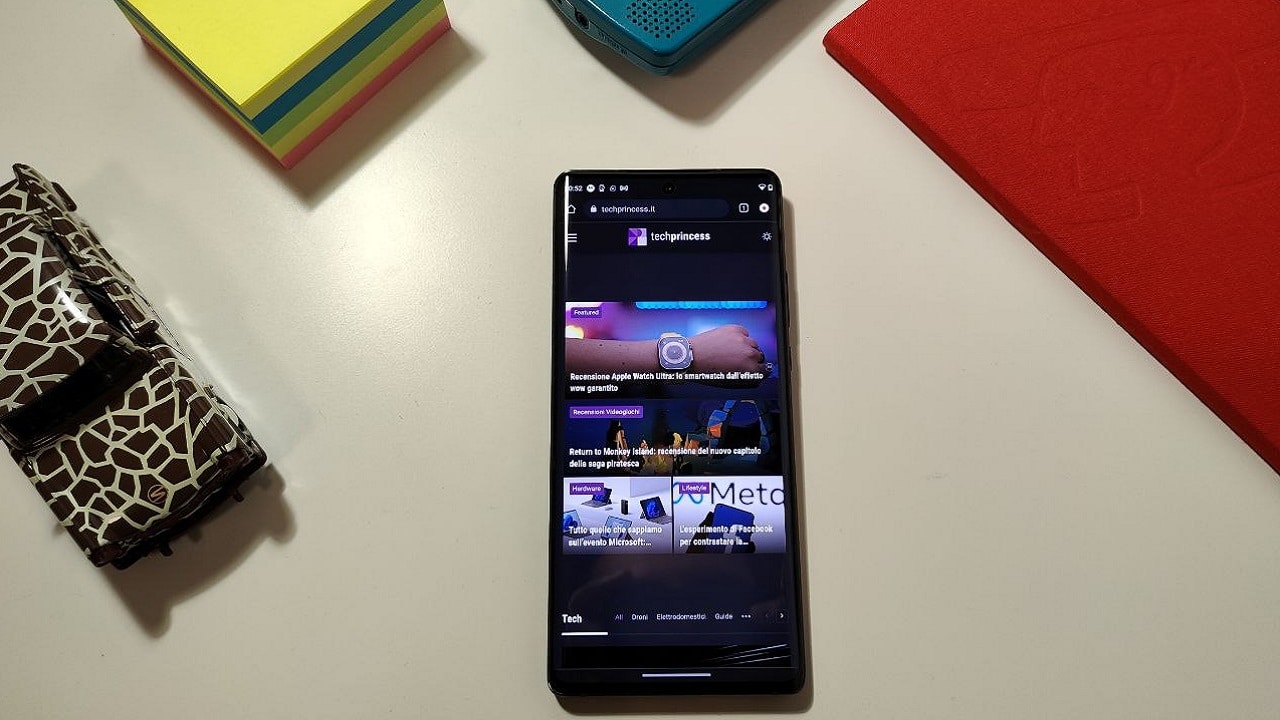Motorola Edge 30 Ultra it is a top of the range in all respects, this review of ours confirmed it to us. If the 200MP camera on paper it’s the highlight, what we like most is how Motorola has it taken care of every aspect of your device: from ultra-fast charging to power, passing through a pleasant design. But competing at the top is not easy: in this price range you will find the best smartphones in circulation. Does it have enough character and functionality to get it right? We tell you about it in this one our Motorola Edge 30 Ultra review.
Our Motorola Edge 30 Ultra review
As we said, Motorola has thought of all the details with this new smartphone and you can already see it from the package. The uncolored cardboard box, the internal paper ties and recyclable materials. The packaging is eco-friendly and we like it very much: it should become normal.
But Motorola Edge 30 Ultra doesn’t give up on extras in the name of sustainability. In fact, in the package you will also find the 125W charger and cable, as well as a pair of headphones with USB-C input to remedy the absence of a jack input in the package. And there is no shortage of a transparent cover, the protective film already applied, as well as manuals and SIM extractor.
But in addition to packaging, we also find a lot of attention in design.

The Motorola Edge Ultra 30 model we tested is in color Interstellar Black (there is also Starlight White). The black back of the smartphone plays well with the light, despite being dull and never showing fingerprints. It’s smoother than we would have liked, but it stays pretty good in the hand (and most users take advantage of the covers anyway). The camera lock comes off discreetly, although appaggiondo the smartphone on the desk “dances” a bit ‘by touching it.
The front is pretty much full screen, that it folds on the sides and has tiny bezels also up and down. The camera cut-out is discreet and leaves room for the screen. Above found the speaker for calls, which also acts as a second speaker for multimedia together with the one at the bottom for a stereo effect.
In the aluminum frame you will find the accession and volume buttons on the right: they give good feedback and are well made. Below you will find the USB-C input in addition to the SIM slot (dual nano-SIM).
Dimensions and certifications
The size of 161.8 x 73.5 x 8.4mm are undoubtedly important, but the thinness and the curved screen on the sides make the smartphone seem more compact than it is. The weight from 199 grams it is all in all content given the screen size (and performance / autonomy).
Only two not excellent notes. are the presence of glass Gorilla Glass 5 instead of the more resistant Victus seen in other top of the range, and the IP52 resistance. It means it will resist splashing, but some products today come as IP67 which means up to 30 minutes under one meter of water. It shouldn’t be a problem in most cases, but that’s a flaw in a device that gets very little wrong.
Screen and audio
Motorola has equipped its Edge 30 Ultra with a display Endless Edge da 6,67 pollici, which surprised us positively during this review. The resolution FHD+ da 2400×1080 pixel (394ppi) screen pOLED it is excellent in the reproduction of contents, with an excellent contrast thanks to full blacks. However, the basic settings show colors a bit ‘colder’ than we would have liked. However, it is very easy to fix it in the settings: it is a quality display.
Especially for those who play. The Refresh rate da 144Hz usually only seen in devices designed exclusively for gaming. A better rerfesh rate (even using adaptive frequency change) improves fluidity throughout the operating system, allowing you to better admire the animations of menus and apps. The 360Hz touch sampling instead it is designed specifically for gamers: this is a device that elevates gaming, without being “dedicated” to those who play.

Also excellent brightness at 1250 nits, we never had a problem looking at the screen in the sun (on the days it was there!). On the other hand, the fingerprint unlocking disappointed us a bit, especially when we used it on a day where a few small drops of water wet the screen. Sometimes it took multiple attempts to unlock it. Nothing unsurpassed, even here we are looking for a nit.
Il HDR10 + support improve watching YouTube or Prime Video videos. But what struck us is how the speakers increase the pleasure of watching streaming content.
Although they are the “classic” hybrid speakers, with the upper one working for calls and being very thin, the volume is quite high. And listening to complex tracks (Make Me Feel by Janelle Monae and Free by Florence + The Machine, for example), it shows a great handling of the highs and mids and “some” bass. Like all other smartphones in the world it is not the best for listening to hip-hop or thundering bass tracks. But it’s better than most of the competition.
Motorola Edge 30 Ultra review: great power and smoothness
The processor Snapdragon 8+ Gen 1 it is among the best for Android smartphones, a true top-of-the-range chip. And Motorola Edge 30 Ultra supports it with 12GB of LPDDR5 RAM and 256GB Memory UFS 3.1: During this review, there is nothing I haven’t been able to handle.
You can play to the max, open all the apps in the world and switch between them in a second. There is practically nothing it can’t handle on Android 12. We also made some marks and the device only warmed up a bit with the Wild Life Extreme Stress Test, the only test where “gaming phones” actually do better. In other words: if you play for hours in a row you may notice some drops in frames per second. But at least if you are not a professional gamer, Edge 30 Ultra is more than you need.

A simple operating system, but full of convenience
Performance is aided by Motorola’s minimalist approach when it comes to software. The version of Android 12 on the Motorola smartphone it is close to what you find on a Pixel, but a few extra features to customize the experience. Most of them can be managed with the Moto app.
For the rest, find an app to manage the experience Dolby Atmos and a call Ready For, which makes it easier to use secondary screens. Then there are some apps to group games and activate the dedicated mode, rather than to manage notifications. All extra possibilities, but they don’t weigh on the experience if you are not interested.
The gestures are also interesting, such as the “shake” to activate the flashlight or the one to activate the camera. All can be deactivated easily if you don’t like them. We find them useful.
Then there are all the news of Android 12, including Material You. And since you can receive updates for three years (Android 15) and up to four years of security updates, you will always stay updated on all future news.
Motorola Edge 30 Ultra review: 200MP camera
The photographic department of this device on paper is exceptional. In fact we find:
- 200MP, 1 / 1.22 inch main sensor and OIS
- Ultra-wide da 50MP con f/2.2
- 12MP portrait sensor with f1.6
- 60MP front camera, f / 2.2
You can record 8K video, take 200MP still photos (although you’ll usually find 16: 1 pixel binning for brighter photos) and all the smart features you expect: double shot, portrait, time-lapse, macro, super slow-mo. In short, a complete package. But how does it behave?

The main sensor Samsung HP1 it’s the first 200MP in a smartphone and it’s really big. Produces images from 12.5 MP blending 16 pixels together into one. And they are of excellent quality, especially during the day. The images are rich in detail and we like the light management. However, HDR and contrast are lower than we expected. THE colors are less vivid than we hoped. Which is not a problem if you want realistic photographs of your surroundings, but which are a bit dull for social media (and most people use them for that). Shooting at 200MP produces images as large as 80MBa little too much for the needs of almost all users.
The ultra-wide is on the same line as the main one: images less colorful than expected, but of high quality. Consistency in this area is undoubtedly to be appreciatedit helps to choose the lens according to the needs.
Il telephoto zooms only from x2, so it will be relatively cheap to capture distant details (digital zoom reaches 16x and up to 10x is not bad). But it does portraits very well, focusing precisely on subjects. In the samples you will find an example of different focus of two subjects: it is an easy to use function (just touch them) and the result is better than when performed digitally.
In the dark, especially the main sensor performs very well, balancing the images well and managing the noise in a big way.
The 60MP selfie camera captures 15MP images doing pixel binning, which are excellent. The outlines of the faces are perhaps a little too sharp, but the result is pleasant for social media. The colors are more vivid, the details are abundant. Optimal.
For video, the 4K quality is very high, while the 8K quality is good (but not to beat other competitors in this field) ….















Leave a Reply
View Comments